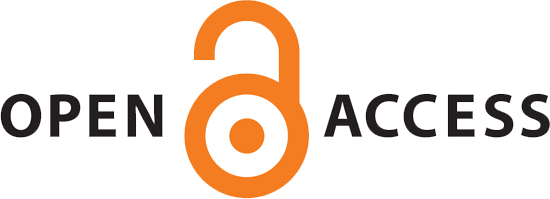Evaluation of Factors Affecting Intraventricular Hemorrhage in Term Neonates in Tehran Vali-e-Asr Hospital, 2016-2018
Abstract
Intraventricular hemorrhage can be associated with various complications that ultimately lead to brain damage. This study aimed to investigate the factors affecting intraventricular hemorrhage in term neonates. This case-control study compared 58 full-term neonates with an IVH diagnosis and 100 healthy full-term neonates. Information on exposure to maternal and prenatal risk factors was collected from Vali-e-Asr Hospital's neonatal information system between 2016 and 2018. Data were collected and analyzed in SPSS software. In this study, risk factors significantly associated with IVH included male gender, respiratory distress, pneumothorax, hydrocephalus, thrombocytopenia, anemia, vitamin K deficiency, asphyxia, hypoglycemia, the need for resuscitation at birth, the requirement for mechanical ventilation, and low weight for gestational age. The mean Apgar score of the first and fifth minutes was significantly lower in the IVH group. The results of this study will determine the risk factors affecting intraventricular hemorrhage to predict and manage brain injury in term neonates.
2. Shipley L, Dorling J, Tata LJ, Szatkowski L, Sharkey D. Risk of Severe Intraventricular Hemorrhage in the First Week of Life in Preterm Infants Transported Before 72 Hours of Age*. Pediat Crit Care Med 2019;20:638-44.
3. Spasojević S, Stojanović V, Savić R, Doronjski A. Intracranial haemorrhage after transport of premature newborns. Med Pregl 2010;63:454-8.
4. Lackmann G TUTpvoeissefsdoh-ieoihif-tapan.
5. Matijević V BB, Kraljević M, Milas I, Kolak J. GENDER DIFFERENCES IN NEURODEVELOPMENTAL OUTCOMES AMONG FULL-TERM INFANTS WITH INTRAVENTRICULAR HEMORRHAGE. Acta Clin Croat 2019;58:107-12.
6. Szpecht D, Miszczyk N, Szymankiewicz M, Gadzinowski J. The incidence of severe intraventricular hemorrhage based on retrospective analysis of 35939 full-term newborns—report of two cases and review of literature. Childs Nerv Syst 2016;32:2447-51.
7. Khan RH, Haque S, Hossain M, Islam M, Khaleque M, et al. Correlation between grades of intraventricular hemorrhage and severity of hypoxic ischemic encephalopathy in perinatal asphyxia. Mymensingh Med J 2014;23:7-12.
8. Al Yazidi G, Wintermark P. Risk factors for intraventricular hemorrhage in term asphyxiated newborns treated with hypothermia. Pediatr Neurol 2014;50:630-5.
9. Tavil B, Bayhan T, Aytaç S, Unal S, Kuskonmaz B, Kuskonmaz B, et al. Foetal and neonatal intracranial haemorrhage in term newborn infants: Hacettepe University experience. Blood Coagul Fibrinolysis 2016;27:163-8.
10. Cha JH, Choi YH, Lee JM, Park HK, Kim J, et al. Altered structural brain networks at term-equivalent age in preterm infants with grade 1 intraventricular hemorrhage. Ital J Pediatr 2020;46:43.
11. Batalle D, Figueras F, Muñoz-Moreno E, Bargallo N, Illa M, Illa M, et al. Altered small-world topology of structural brain networks in infants with intrauterine growth restriction and its association with later neurodevelopmental outcome. Neuroimage 2012;60:1352-66.
12. Lee JM, Choi YH, Hong J, Kim NY, bee Kim E, Lim JS, et al. Bronchopulmonary dysplasia is associated with altered brain volumes and white mattermicrostructure in preterm infants. Neonatology 2019;116:163-70.
| Files | ||
| Issue | Vol 63 No 4 (2025) | |
| Section | Original Articles | |
| DOI | https://doi.org/10.18502/acta.v63i4.20168 | |
| Keywords | ||
| Intraventricular hemorrhage Term neonates Brain injury | ||
| Rights and permissions | |

|
This work is licensed under a Creative Commons Attribution-NonCommercial 4.0 International License. |




